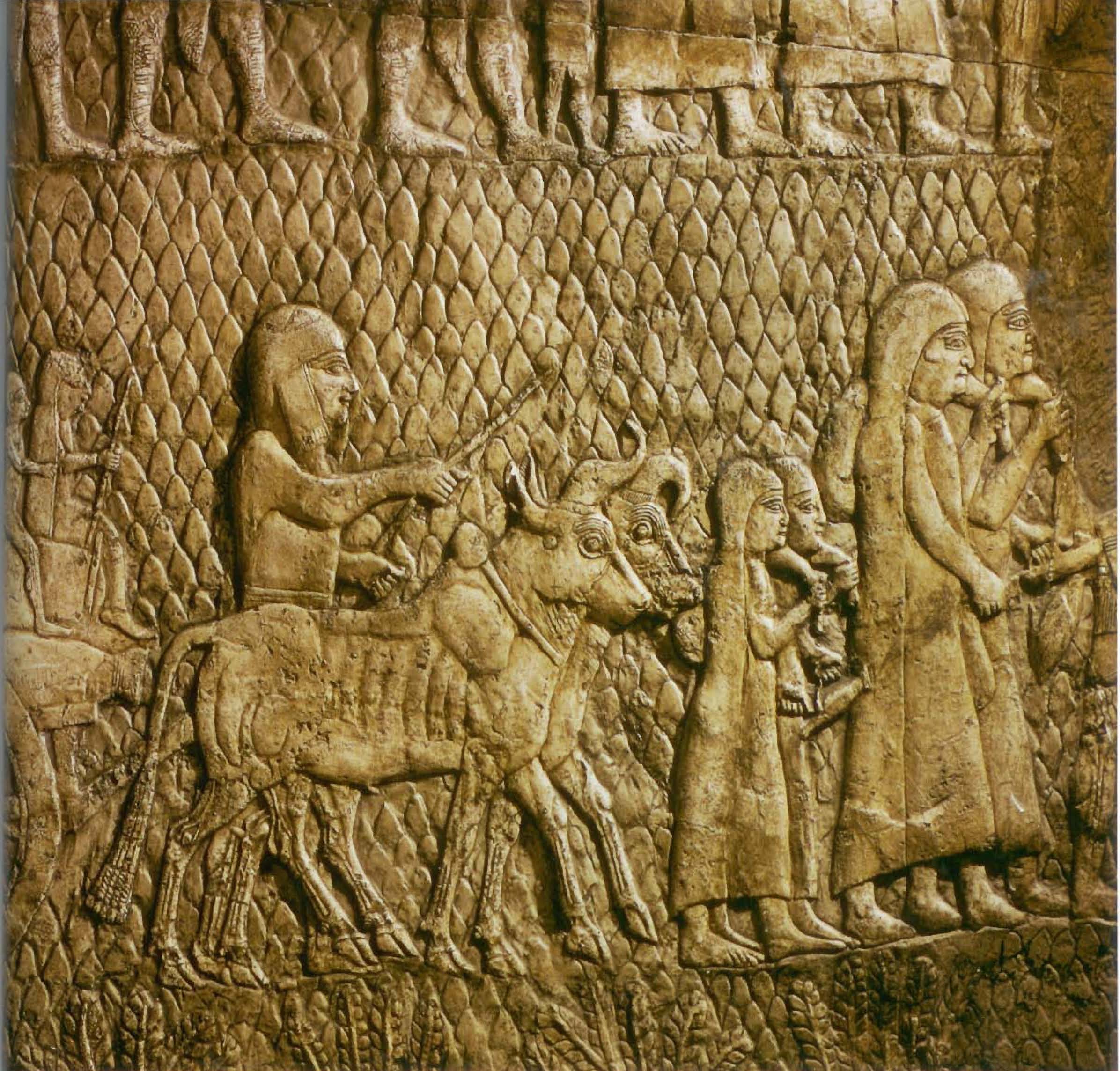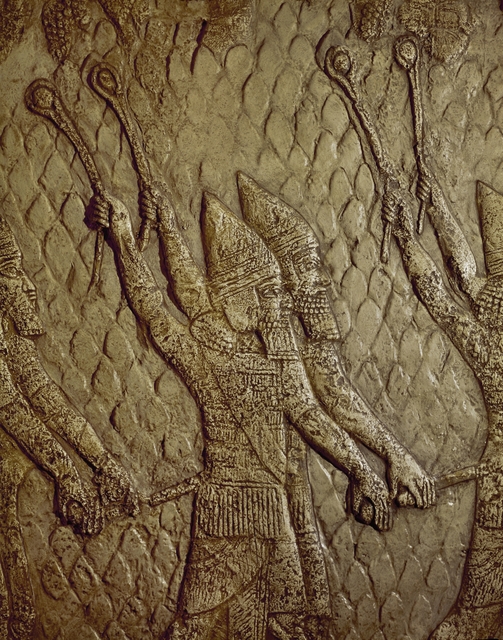 Sennacherib, king of the world, king of Assyria, sat upon a nimedu throne and passed in review the booty from Lachish (Notation on Sennacherib’s throne room relief)
Sennacherib, king of the world, king of Assyria, sat upon a nimedu throne and passed in review the booty from Lachish (Notation on Sennacherib’s throne room relief)
Date- c. 700 BCE
Current Location- British Museum, London, England
Language and Script- Assyrian?; cuneiform
Biblical Verses- 2 Kings 18-13–14, 17; 19-37; 2 Chronicles 32-21
General Information-
• In his third campaign against rebellious vassals in the west, the Assyrian king Sennacherib devastated the kingdom of Judah. The central battle in this campaign seems to have been at Lakhish, although it is not specifically mentioned in Sennacherib’s annals. Lakhish was the principal fortified city of Judah outside Jerusalem. Its importance in this campaign is highlighted in 2 Kings 18-14 , which describes it after being taken as the site of Sennacherib’s headquarters for further attacks. We see how Sennacherib felt about this battle from the reliefs he made of it. When he constructed the “Palace without Rival” in his new capital of Nineveh, he had an entire room decorated with reliefs depicting the battle of Lakhish in great detail. Telescoping all the events of the battle into a single scene, they show the attack on Lakhish, its destruction, the deportation of its surviving population, and Sennacherib’s triumphal review of spoil and prisoners.
• Neo-Assyrian reliefs depicting scenes of war were intended as visual historical records, but an explanatory text was also inscribed on the orthostats. Before Sennacherib’s time, inscriptions were placed as continuous lines of cuneiform text on the horizontal borders between the registers of the war scenes. But, beginning with his reliefs, brief captions were inserted into the scenes, making each episode clearer. In the Lakhish reliefs, such an inscription can be found just above and to the left of a depiction of Sennacherib himself, in which he is shown sitting on an elaborate throne and observing the progress of the battle.
• It is noteworthy that the king’s face here has been mutilated. This was probably done during the upheaval that followed his assassination in 681 BCE (see 2 Kings 19-37 and 2 Chronicles 32-21).
Relevance to Ancient Israel- These inscriptions give us a better understanding of the biblical account of Sennacherib’s attack on Ancient Israel. His dominion over Judah set the trend of subservience to the empires of Mesopotamia that culminated with the destruction of the Jerusalem Temple by Nebuchadnezzar in 586 BCE. The reliefs also aided archaeologists in identifying a large mound of earth adjacent to the walls of Lakhish as a siege ramp, the largest example of its kind that has been found to date. In addition, Lakhish Relief 5 depicts the deportation of the inhabitants of Lakhish and contains the first extra-biblical mention of the term “Judahites.”
Circumstances of Discovery and Acquisition- Austen Henry Layard and Hormuzd Rassam excavated part of Nineveh’s southwest palace, known as Sennacherib’s “Palace without Rival,” during the years 1847–1851. When Layard first discovered the reliefs in what was later called the “Lakhish Room,” he was unaware of their contents because he could not read the inscriptions. When they were deciphered and their biblical connection became apparent, he had Rassam remove them with great care because of their poor condition and shipped them to the British Museum in London, where they may be viewed today.
See also:
- BiblePlaces.com- Lachish
- Bible History Online- Lachish Letters
- The Lakhish Ewer, c. 1220 BCE
- Lakhish Ostraca, c. 587 BCE
- Scholars’ Corner- Yadin Presents New Interpretation of the Famous Lachish Letters, Oded Borowski, BAR 10-02, Mar-Apr 1984.
- Lachish—Key to the Israelite Conquest of Canaan? David Ussishkin, BAR 13-01, Jan-Feb 1987.
- Restoring the Great Gate at Lachish, David Ussishkin, BAR 14-02, Mar-Apr 1988.
- Grisly Assyrian Record of Torture and Death, Erika Bleibtreu, BAR 17-01, Jan-Feb 1991.
- Return to Lachish, Steven Feldman, BAR 28-03, May-Jun 2002.
- Why Lachish Matters- A Major Site Gets the Publication It Deserves, Philip J. King, BAR 31-04, Jul-Aug 2005.
- The Assyrian Siege, NOVA.


